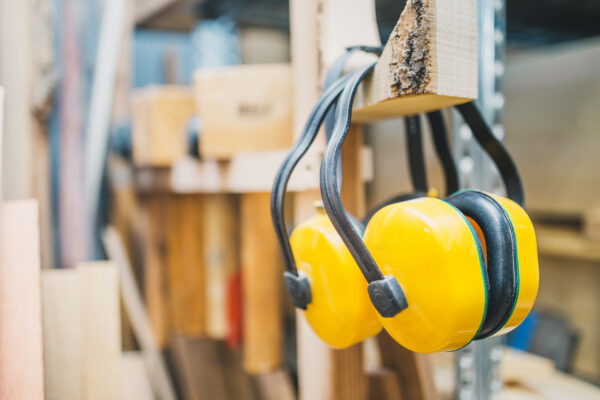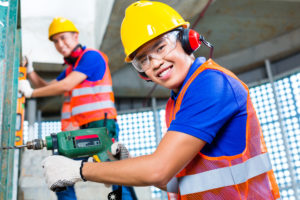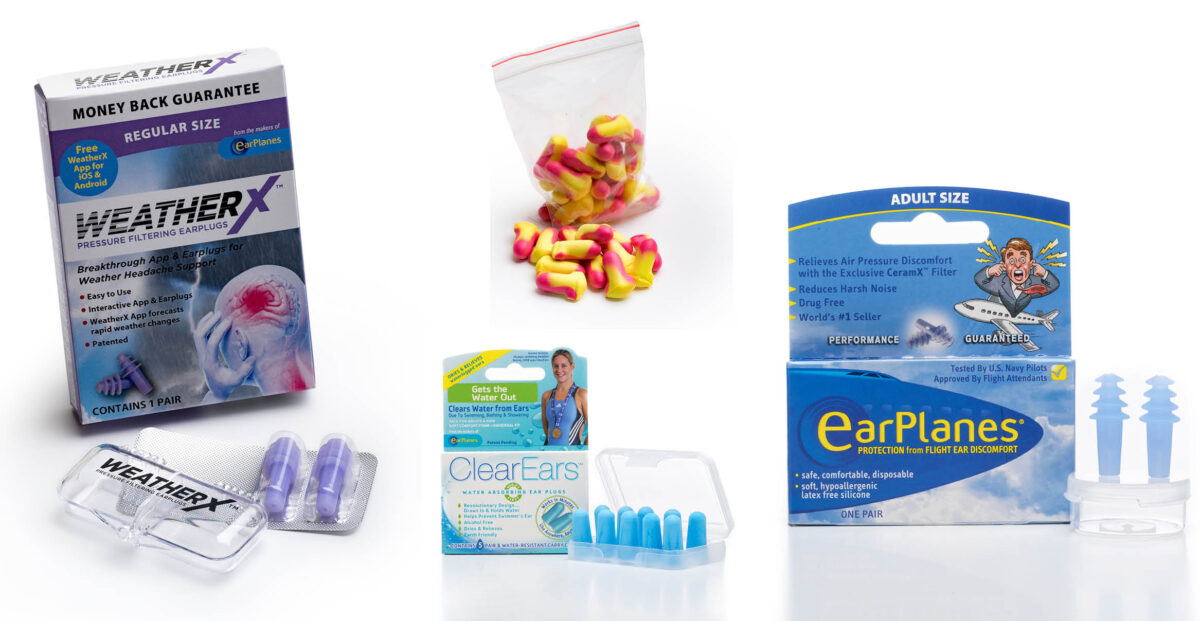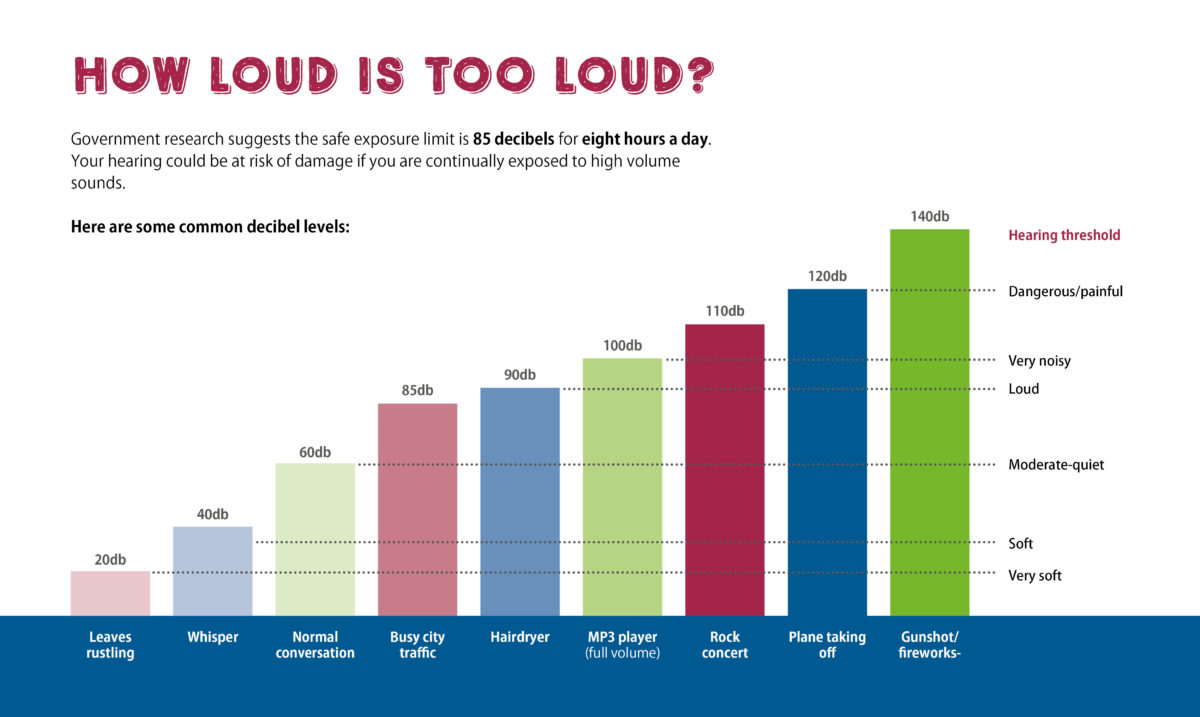Protecting your hearing

Your hearing – a very valuable commodity
It is essential to take care of ears and hearing, as damage to the auditory system could be irreparable. However, if you have hearing loss it is especially important to preserve and protect your remaining hearing to aid communication.
As hearing loss generally occurs gradually, many people don’t notice the subtle decline until loved ones point it out. Our brains are very good at filling in the gaps through lipreading and knowing the context of the conversation. Hence hearing loss often goes unnoticed.
Hearing is delicate and susceptible to damage, even from everyday activities and environments. Here, we’ll highlight some risk areas when considering hearing protection and share helpful tips to minimise damage wherever possible.
Ear care
There are some general rules for protecting your hearing to ensure you can spot changes in your hearing:
- Don’t poke anything in your ear canal – ever! This could cause damage to your auditory system.
- Ensure your GP is aware if you have hearing loss and this is recorded on your medical records. It’s especially important to remember this when you are prescribed any medicines. Ask your GP to check that they are not ototoxic (toxic to the ear).
- Find a local audiologist that you trust and book an appointment to have your hearing checked annually. Work with them to keep your ears healthy and free of wax.
- Be vigilant of any change in your hearing or existing tinnitus symptoms. Ask your audiologist for advice if you have any concerns.
Whatever level of hearing you have it is crucial to do everything you can to preserve it. Here are examples of everyday situations where sound management might be necessary.
Managing the sound environment at home
- Become familiar with the decibel levels of common everyday activities such as mowing the lawn or blow drying your hair.
- Acoustically optimise your house to absorb sound. Consider soft furnishings, carpets and curtains, particularly in kitchen areas where noise levels can soon become high.
- DIY – if you are taking on home projects be aware of the noise levels of power tools. Consider noise protection i.e. earplugs or ear defenders.
- Gardening jobs can include very noisy equipment such as mowers, leaf blowers, strimmers and chainsaws. Also, be aware of debris/seeds etc that could settle in your ear canals and cause irritation and infection.
- Be aware of car noise and how this affects how loud you set your car stereo. Spend some time setting the balance of your speakers to allow you to get the best listening environment.
How to protect your hearing at a concert
- Certain large events can be noisy and push the boundaries of safe listening levels. These include air-shows, music events and football matches. You don’t have to miss out on the fun. Consider downloading a sound level meter app onto your smartphone. These are often free, and you can keep them handy to measure the noise levels of any sound environment you are exposed to. A slight increase in volume, once over 90 decibels, can drastically reduce the length of time you can be in that sound environment safely. Consider noise protection i.e. earplugs or ear defenders..
- Don’t stand too close to loudspeakers, especially in an environment where you have no control over the volume.
- Invest in custom plugs for greater noise protection.
Protecting your ears when swimming
- Avoid getting water into your ears if you swim regularly in cold water or rough seas. Invest in custom swim plugs.
- Consider using specialist earplugs for preventing water getting into your ear or removing it.
How to protect your hearing at work

The risk to hearing from noise at work is dependent on the sound levels (acoustic power). The safe exposure limit is calculated from a combination of exposure time and sound intensity (level).
The noise level where employers must provide hearing protection is a daily or weekly average exposure of 85 decibels. Reducing the noise level by only three decibels would allow a doubling of the exposure time.
Based upon the Equal Energy Law: 80dB for 8 hours is the equivalent to 83dB for 4 hours, is the equivalent to 92dB(A) for 30 minutes, is the equivalent to 110dB(A) for 30 seconds. Meaning, the louder the noise, the less time you should be exposed.
- If hearing protection is recommended wear it correctly in all areas. For hearing protection to be effective you must wear it 100% of the time
- Find ear protection which is comfortable for you, whether ear plugs, ear muffs or a combination of the two
- Know your surroundings – what are the average levels of noise you are exposed to throughout your shift
- If the company you work for offers annual hearing checks, book yourself in and monitor your hearing.
- If you are worried about your hearing , get your hearing checked. Inform the person testing your hearing when you were last exposed to noise and how long you were exposed for.
How to listen to music safely (on phones & portable devices etc)

- Set your headphone volume levels when you’re in a quiet environment, not a place with lots of competing sounds
- Lower the volume if you can’t hear those around you speaking
- Avoid using a listening device where lack of attention to your surroundings could be dangerous, for example whilst driving or operating machinery
- Pay attention to how long you listen to music at high volume. Your ears adapt to higher volume settings over time meaning that you can damage your hearing even if the intensity doesn’t seem uncomfortable to your ears
- The louder the volume, the less time noise takes to affect your hearing. If you experience ringing in your ears or speech sounds muffled, stop listening and get your hearing checked
Video: how loud are your headphones?
Courtesy of Hear-it
How to protect your ears during firework displays
Watching firework displays can be a fun activity to share with friends and family. They can be used at several different events such as New Years Eve, Bonfire Night, weddings and more.
Whilst it’s great to watch the night sky fill with bright colours and patterns, it’s also important to be mindful of your hearing. A sound over 85 decibels (dBA) is considered ‘loud’ for the human ear. The noise limit for fireworks in the UK is 120 dBA, they can reach up to 140 dBA.
Read our blog for more tips for protecting your hearing at these events.
Different types of ear protection

A wide range of technical hearing protection products are available. Quality ear plugs will reduce the overall level of sound while maintaining an even balance across the sound spectrum. This means that you can still hear everything clearly, although the overall sound level is reduced. The greater the number of decibels of attenuation by the ear plugs, the better overall protection they offer.
Non-custom ear plugs
This type of ear protection is seen as the most basic form. Plugs can be made out of:
- Memory foam (where the plug is rolled up and inserted into the ear canal)
- Silicone (which is rolled into a ball and pressed into the ear to mould over the ear canal)
- Flanged (where they achieve a seal down to their tapered shape)
- Tapered ear plugs inserted into the ear to obtain a seal against the noise
One of the advantages of non-custom ear plugs is that they are disposable and therefore more hygienic. Non-custom plugs are also available. These are fitted with specific filters for use in a variety of situations including at work, on aeroplanes, at parties and whilst asleep.
Check out our range of non-custom ear plugs in our online shop.
Ear muffs or defenders
Ear muffs or defenders have cups lined with sound-deadening material. Protection usually comes from acoustic foam which absorbs sound waves by increasing air resistance, thus reducing the amplitude of the waves.
Custom hearing protection
Customised earplugs, which attenuate sounds across all frequencies rather than just low and mid-frequencies, can be of particular interest to musicians looking for ear protection. These ear plugs are designed to protect your hearing, while delivering clear and natural sound across all frequencies.
Depending upon the environment you are in, different levels of protection will be required. Before purchasing any ear plugs discuss your needs with an audiologist who will be able to recommend an appropriate product. Impressions of your ears will be taken by an audiologist and sent to a manufacturer to be turned into an ear plugs.
Webpage updated: April 2024
